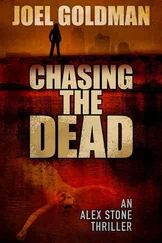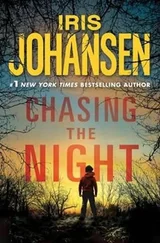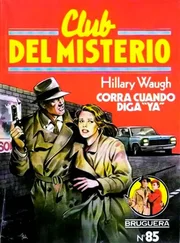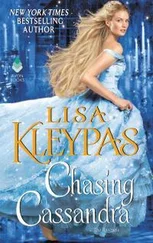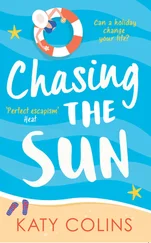1 ...7 8 9 11 12 13 ...20 It was after 1:00 a.m., and all I wanted to do was go to sleep when Clinton told me his advice for how Obama could improve his speech making. “Suppose we’ve been friends for forty years,” he said, resting a palm on my shoulder. “If you came to visit me in the hospital and said something pretty and eloquent instead of saying, ‘God, I’m sorry. This sucks. I wish I could do more about it,’ it’s an insult. So I told the president the eloquence should go at the end of his speeches now, never in the middle …”
I nodded, smiling politely and checking that the red light of my voice recorder was still glowing.
He changed outfits at least three times a day, usually reappearing in the verdant hotel gardens for dinner with donors wearing a linen guayabera and khaki cargo pants. Africa chic. “He’s like Lady Gaga,” an aide said.
The other thing I noticed about Clinton was how often he talked about dying. He hardly thought he’d live to see the 2016 election, never mind wind up back in the White House.
When the manager of a soybean processing plant asked him to come back next year, Clinton said, “I’m older than you. We have to make sure I’m still around.” When I asked him about Chelsea recently joining the Clinton Foundation board, he said, “We’re trying to build it up so it’d still run if I drop dead tomorrow.”
In Nicosia, we sat down for coffee, and when Cypriots weren’t swarming him for photos, I asked whether Hillary would run for president in 2016. “She points out that we’re not kids anymore and a lot of people want to be president,” he responded.
I saw things in Africa that made me less cynical about the Clinton Foundation. Under tamarind and mahogany trees, aid workers set up a station where deaf children from the local villages could be fitted with their first hearing aids. It’s hard to care about whether some sleazy foreign donor wants something from the State Department after you’ve seen a child hear for the first time.
And when the Clinton Foundation is maligned, I think of Bill Clinton Kaligani. We were all standing on the tarmac at the Entebbe International Airport, and I’d completely run out of topics to ask Clinton about. I just extended my voice recorder to pick up his stream of consciousness when a military helicopter emerged on the yellow-orange horizon.
“Is that him?” Chelsea said, cupping her hand over her eyes as she looked into the setting sun.
Moments later, a slender fourteen-year-old Ugandan boy in his threadbare school uniform stepped out of the helicopter. His name was Bill Clinton Kaligani. His mother had named him after Clinton when he visited Uganda in 1998.
A photograph hangs in the Clintons’ Chappaqua home. Clinton is holding the newborn as Hillary, in a wide-rimmed Out of Africa hat, looks on. “He was born the day before we got there,” Clinton told me over the hum of the helicopter. “It was one of the most memorable days of my presidency.”
He walked over and pulled little Bill into his arms. The boy wrapped his hands around one of Clinton’s hands and rested his head on that doughy spot on the chest beneath the shoulder. They stayed there like that.
After they visited for a while, and Clinton said he’d pay the boy’s school tuition fees, the staff and donors prepared to board our chartered 737. Aides tugged Clinton toward a separate Gulfstream, but he wasn’t done. He called me over and told me that on that same Africa trip in 1998, a Senegalese farmer had named a goat after him.
“We’re going to fly the goat in next,” he said.
5
Roving
NEW YORK CITY, 2001
Two weeks after college graduation, I took a one-way flight to New York with no job, no apartment, and a stack of clips from the Daily Texan . I’d saved some bat mitzvah money and what I’d made working in a snow cone stand off Barton Springs Road in Austin.
I temped all over Midtown, insurance offices and nonprofits mostly. Before work, I would run around Midtown in my suit and tennis shoes and drop off my stack of clips with the mailrooms or security desks at Newsweek , Time , Fortune , etc. A month later, I got a job as a rover at Condé Nast, the publisher of magazines like GQ , Vogue , Vanity Fair , and the New Yorker .
Condé Nast rovers were sort of like temps except that they had six months of steady work. We ranked beneath interns—who almost all had parents on the Upper East Side and attended a Seven Sisters school—but slightly above the outside temping agency I’d been working for. We had half a year to impress editors and publishers, demonstrating our efficiency at cleaning out closets, changing coffee filters, or picking up dry cleaning. Occasionally, we got to answer a phone. If no one wanted to hire us after six months, the gig was up and the program would be replenished with a new crop of desperate, broke aspiring magazine writers.
We all wanted our chance to temp at the New Yorker and Vanity Fair , but those magazines rarely asked for rovers. Mostly, we helped executives on the terrifying corporate floor, as white and sterile as a hospital, and were rotated in at magazines like Brides , Self , and Allure . One senior editor told me during an interview for a job labeled “beauty closet organizer” that “the best part about working at Allure is that it’s like a sorority.” Another asked if I would describe myself as a “makeup junkie,” as if one look at my almost-bare face didn’t answer that question.
Every day at Condé Nast was an education, though not necessarily the one I thought I’d be getting.
I was opening mail on the corporate floor for a creative director, a towering, hulking bachelor who wore ascots and had me print out all his emails and then transcribe his scribbles in No. 2 pencil in the replies. I got to a package containing a heavy Lucite box full of sand and aqua seashells, an invitation to a party in Montauk with the Sex and the City cast. He told me to RSVP no, adding, “But do me a favor. Find out if that actress who plays Charlotte is single.” I asked, in the docile voice of domestic help, if I could go to the party in his place.
“How are you going to get to Montauk?”
“Uh, well, I’ll take the bus.” I had no idea that Montauk sat at the tippy-tip end of Long Island.
“You’re gonna take the bus? To a Peggy Siegal party?” Ascot said. He laughed, more amused than irritated, and walked back into his office with the cream-colored carpet and the two white leather bucket chairs that I once heard his assistant describe as “the Herman Millers.” The furniture had a name, and I didn’t.
The one time that I’d rotated into Vogue , helping to organize the small closet converted into an office and library for the magazine’s fact-checkers, I’d worn my brand-new pair of UGG boots. Anna Wintour walked by the closet, paused, and behind her black glasses, fixated on the furry brown boots that I’d spent half my paycheck on. I never wore the UGGs again.
I’d been crashing at my college boyfriend Russ’s place in Bed-Stuy. Back in Austin, Russ and I had bonded over our love of Midnight Cowboy , each of us waxing poetic on its artistic subtleties and our own dreams of moving to New York. I should’ve known the relationship was doomed given that this movie, the ultimate testament to big-city failure, was what brought us together. Russ had an internship at the Nation that paid a stipend of $150 a week, and he liked to remind me regularly that I worked at lightweight capitalist rags and that he was the serious journalist in the relationship.
Fifteen years later, a Bernie Sanders supporter read my biography online and called me “a gruesome cross between Midnight Cowboy and Working Girl .” Pretty much. I’m brand spankin’ new in this here town and I was hopin’ to get a look at the Statue of Liberty …
Читать дальше



